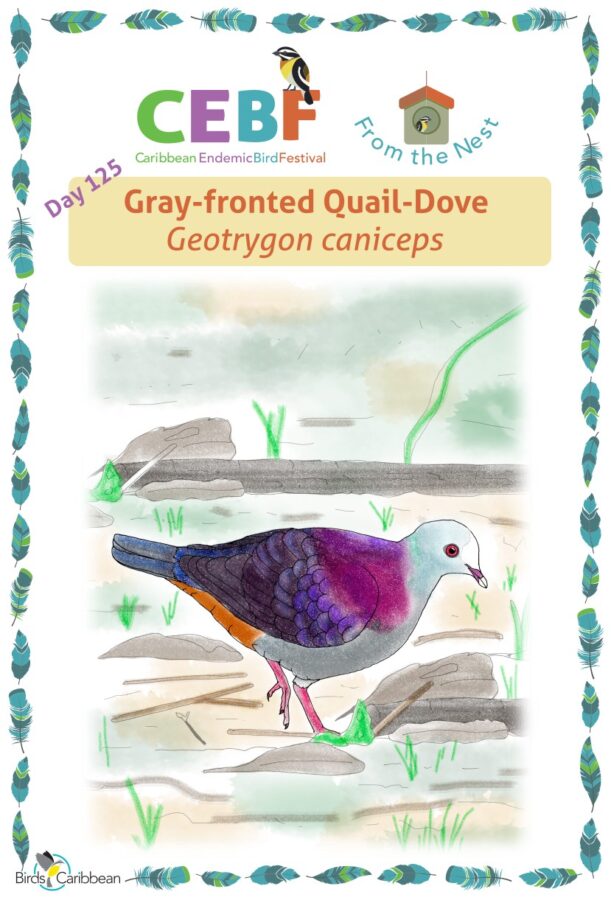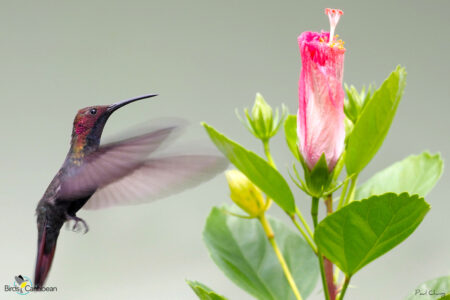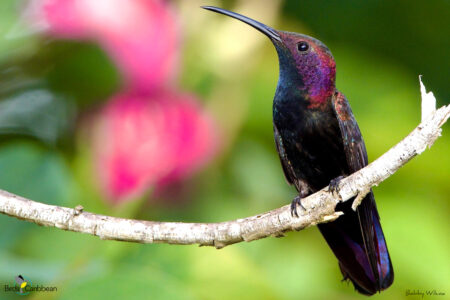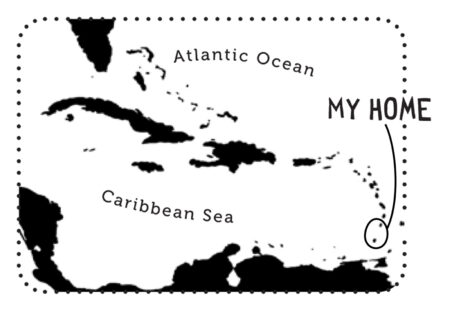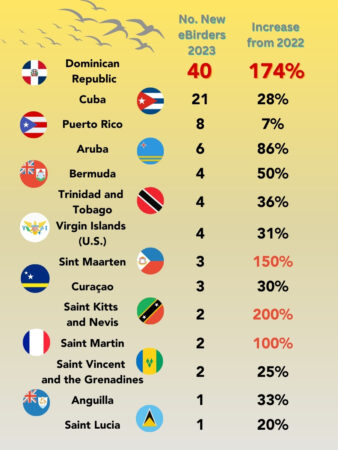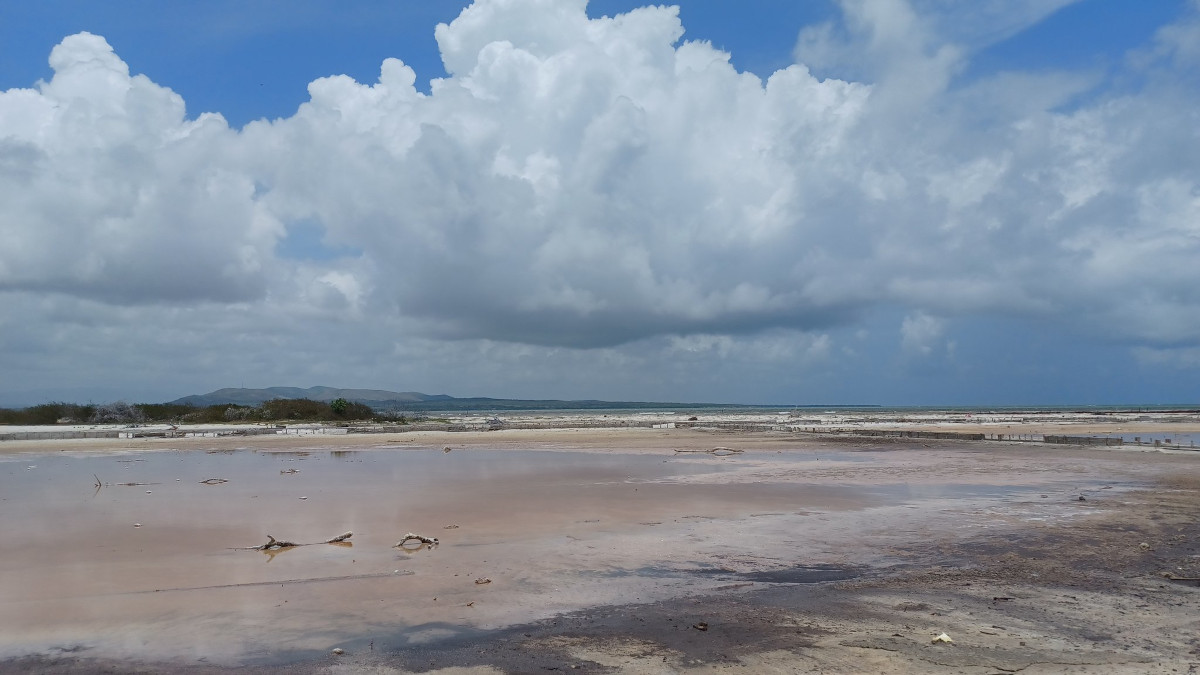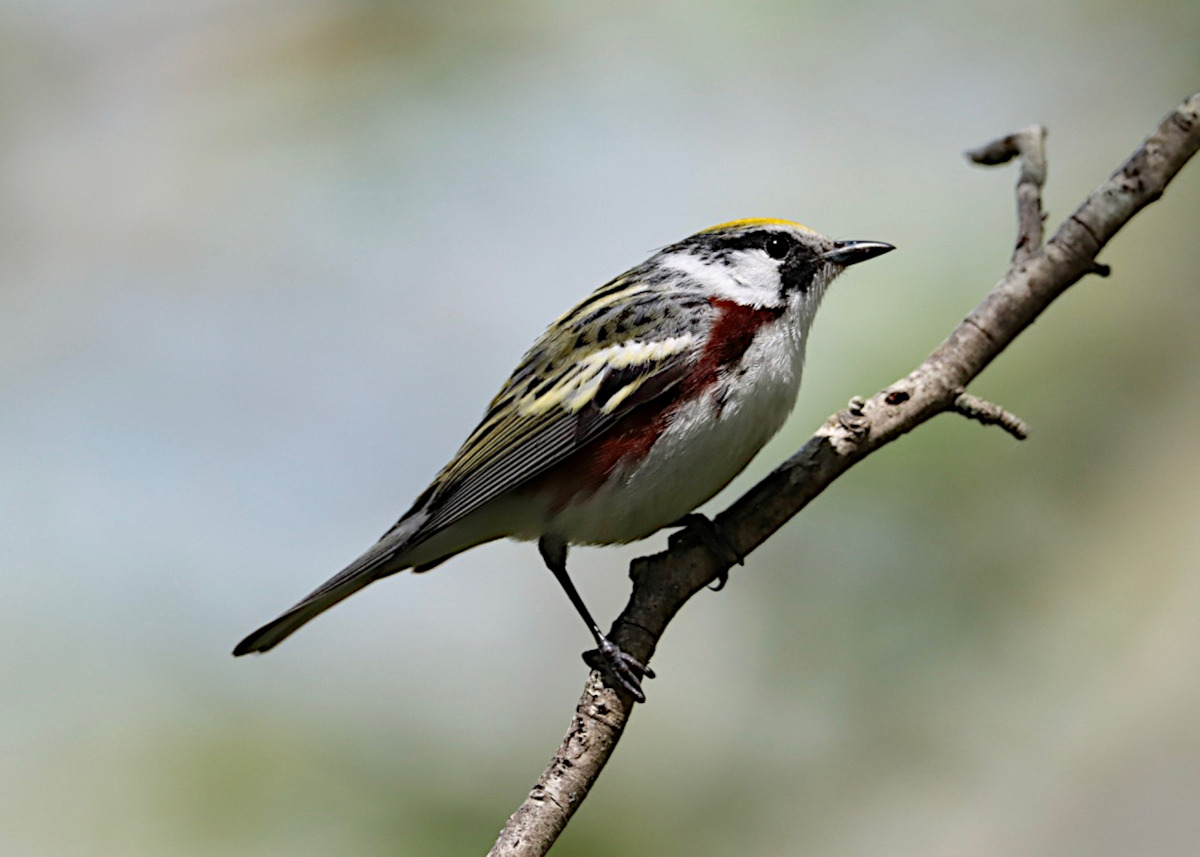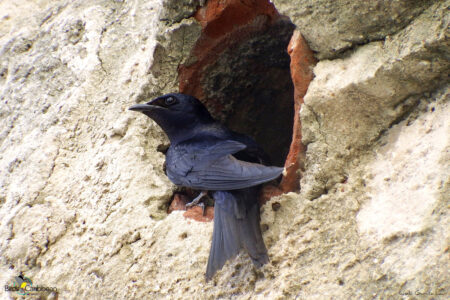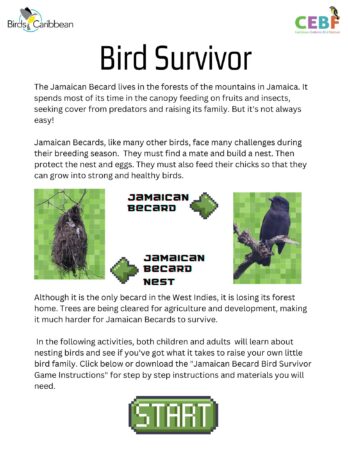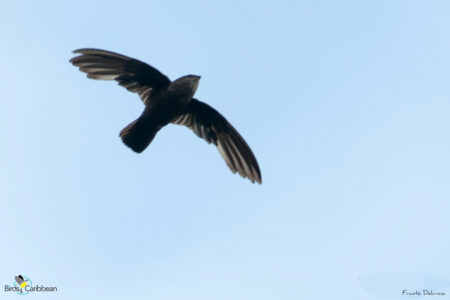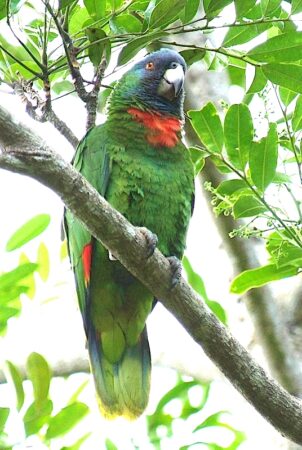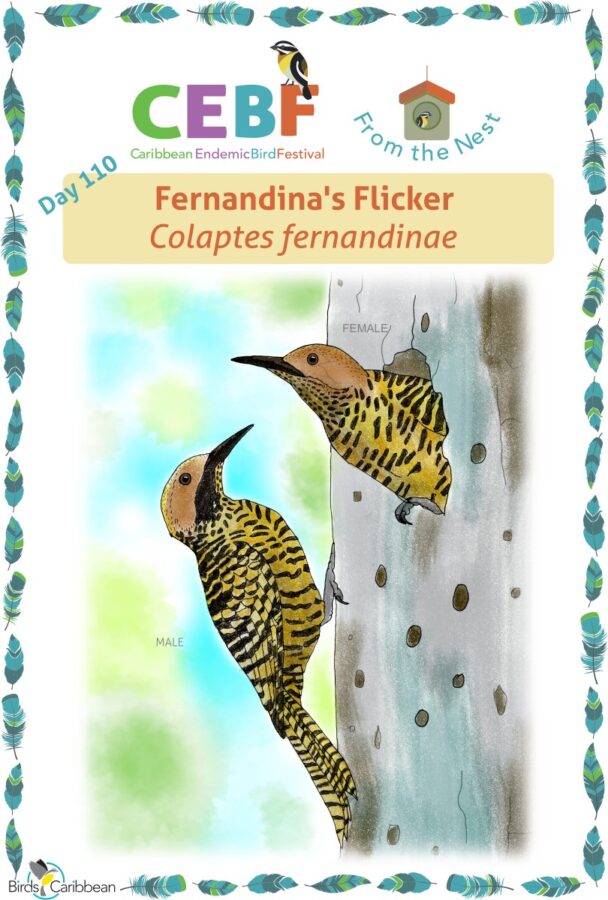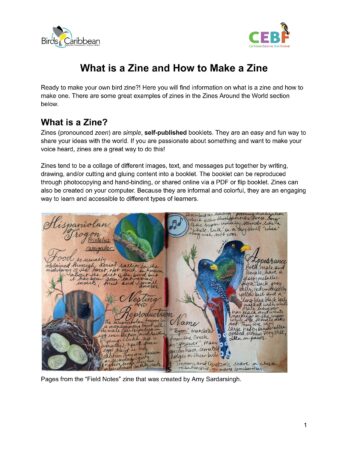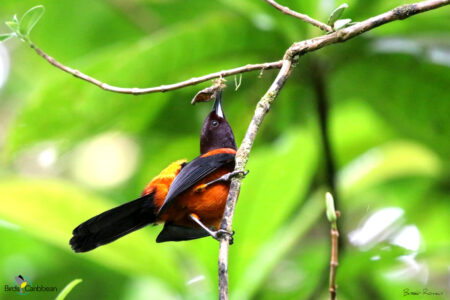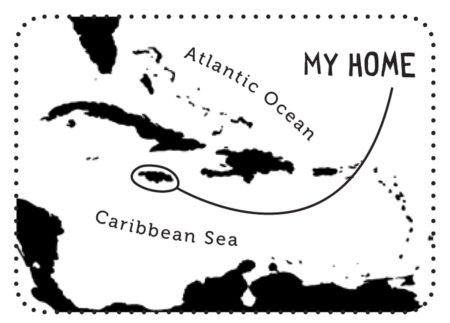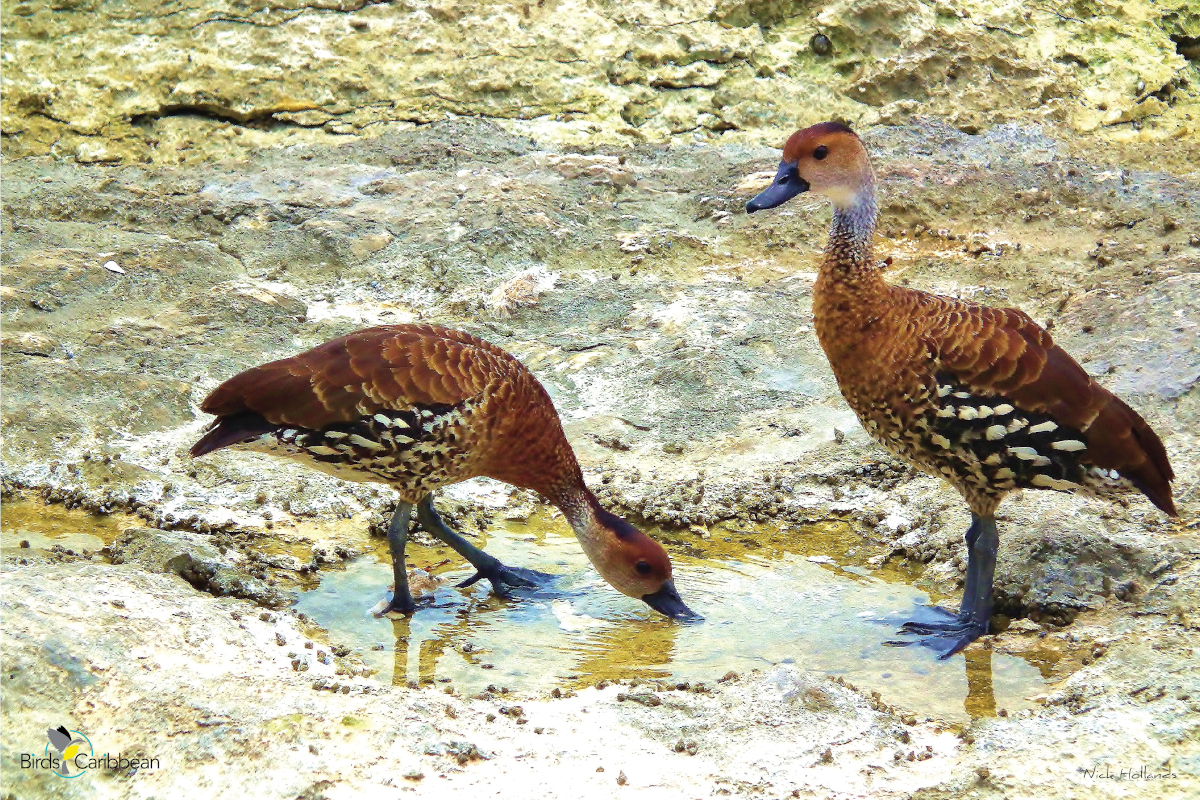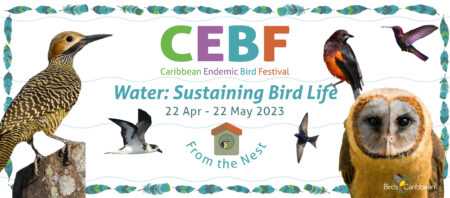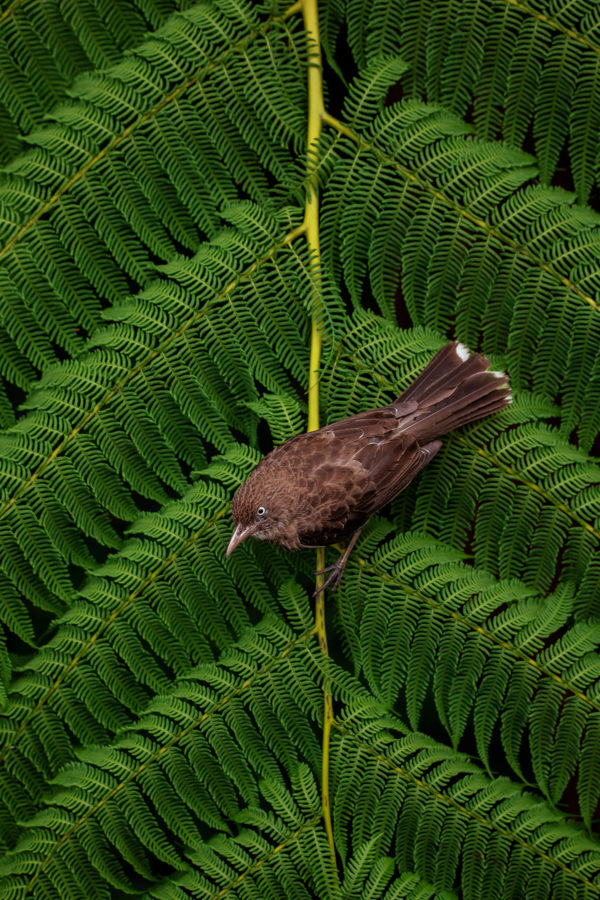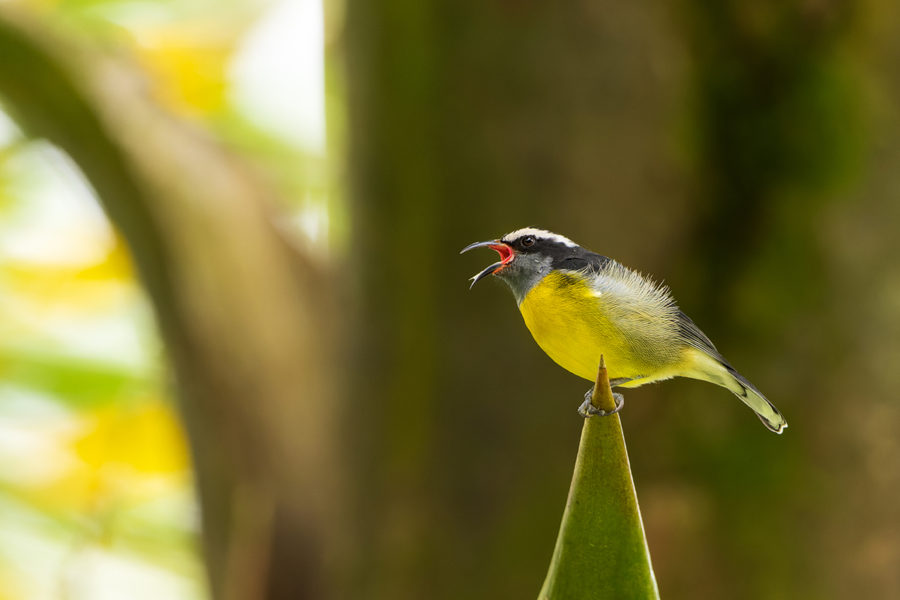
During February 2023 members of the International Black-capped Petrel (aka Diablotin) Conservation Group traveled to Dominica to carry out a search for one of the Caribbean’s most fascinating, but threatened, birds. Looking for the elusive Diablotin, an endangered seabird that comes to land only at night, to nest in burrows was a challenge. This was only made harder by the need to search its preferred habitat – the rugged and heavily vegetated peaks of the Island. This year the group had some assistance from a four-legged friend!
As well as searching for burrows the team aimed to raise awareness of the Diablotin on Dominica and forge a strong research-media partnership. Through visits to schools, and interviews on local TV and radio, they made sure the Diablotin got the attention it deserves! Read on to find out more about how the trip went and what the team found.

Students in Dominica have a charming way of thanking guest speakers. After a presentation, a selected volunteer formally gives thanks on behalf of the class and states an appreciation for the topics covered and the time spent. Being thanked this way is gratifying to any speaker, of course. Even more satisfying is when students engage by asking questions and relating their own experiences! It helps if the topic is compelling and relatable to the audience. We found this to be the case for the education and outreach activities associated with the 2023 Diablotin Expedition to Dominica.

Expedition Diablotin took place February 8-17, 2023. It consisted of field work to collect evidence that a rare seabird (also known as the Pterodroma hasitata or Black-capped Petrel) continues to nest on Dominica. The work included hikes up mountain peaks to listen and look for flying birds, use of a trained dog to detect the scent of burrows used by petrels, a boat trip to look for petrels in coastal waters, and engagement with citizens to sleuth out local knowledge. Scientists and conservationists believe it is highly likely that Diablotin breed on Dominica because of evidence in recent decades, but nesting has not been confirmed in the scientific literature since 1862!

The scarcity of Diablotin explains why few Dominicans or visitors are familiar with this bird. Most people that we met were surprised to discover that the country’s tallest mountain, Morne Diablotin [elevation 1,447 m; 4,747 ft] received its name from a seabird. Early European and African arrivals to Dominica were frightened by eerie noises in the darkness, which were actually vocalizations by the Diablotin during nighttime courtship flights. However, people do tend to know that the volcano-formed Dominica hosts tall peaks, steep ridges and deep valleys, and is largely undeveloped with much of its forest intact. They are aware that they live on “The Nature Island” which harbors unique wildlife…even if not all the wildlife is understood or appreciated.

During media interviews and school presentations, we explained why the once-abundant Diablotin birds disappeared. One reason is that humans over-harvested the birds for food. People ate both the adults and the chicks (small, fluffy puffballs of fat raised on fish oils!). The animals that accompanied humans to Dominica – rats, cats, dogs, and pigs – also ate their share of petrels. Finally, small nesting populations could have been wiped out on an island prone to landslides and hurricanes

We presented to about 80 students at four schools: Geography students at Dominica State College; 4-H students at St. Mary’s High School for Boys; Science students at Community High School; and the Environmental Club at Convent High School for Girls. A fun tidbit is that Jeanelle formed this club when she was a Convent student!
There is nothing like live demonstrations to engage an audience. In two classrooms, Africa was available to demonstrate her detection dog abilities, sniffing out a dog toy placed out of sight.

In another class, Jeannelle set up a Diablotin Obstacle Course – a game modified from Migration Challenge in the Birdsleuth Curriculum. Students pretended to be petrel fledglings on their first flight from nest to ocean. Others became the obstacles: snatching with their hands to mimic introduced predators, holding up extension cords to serve as power lines or a long strip of cellophane to serve as a lighted glass structure. Others threw paper balls mimicking owls or other aerial hazards or whirled around the room as hurricanes. Given all these challenges, it’s unsurprising that few of the “fledglings” made it across the classroom!

Prizes and mementos are popular outreach and educational tools. Students able to answer questions about the Diablotin, its history, and its threats were rewarded with stickers. Stickers and even yarn chicks were awarded to students who voluntarily asked questions – the most satisfying being a version of, “How can I help?” Students were urged to spend time in the forest as a way to get to know its wild inhabitants. If they preferred an indoor job, we suggested pursuing an education to contribute to conservation as a laboratory scientist, software programmer, equipment engineer, or land-use policy-maker.
Radio and television allows for a far-greater reach than in-person presentations. We had interviews with four media services:
- Government Information Services
- Dominica Broadcast Station
- Kairi Radio
- Vibes Radio
In interviews for the media, we described the Diablotin and emphasized the importance of habitat conservation in preserving biodiversity. We congratulated Dominica for its unique position as a country with more than 60% of its forest intact.
In the end, Expedition Diablotin covered 50 km of trails and 3,800 meters in altitude through thick Dominica’s forest. We had Africa, thermal binoculars, a loudspeaker, and spotlights and lots of mud, rain, fog, and wind. Alas, we found no clear evidence that the Diablotin is still in Dominica. However, there were some possible burrow detections (to be monitored by camera) and lessons learned to apply to future expeditions.
Importantly, we did find many Dominican citizens and visitors very interested in the fate of the Diablotin and receptive to another reason to conserve their forest. Considering that, as well as the number of students and other citizens now inspired to lend their eyes and ears to the search for this special bird, the Expedition Diablotin was clearly a success.
enjoy some more photos from the 2023 Diablotin expedition
Jennifer Wheeler shares information on national TV about the search for the Endangered Diablotin (Black-capped Petreo).
This effort involved partners from Seabird Ecology, the American Bird Conservancy, U.S. Fish and Wildlife Service, WildDominique, Dominica’s Forestry, Wildlife & Parks Division, BirdsCaribbean, Universitat de Barcelona, and the International Black-capped Petrel Working Group. Thank you to our members and donors who helped make this trip possible!
You can read the full trip report from this expedition by Yvan Satgé, Jacob González-Solís and Stephen Durand here. And, find out more about Black-capped Petrel conservation efforts in the Caribbean and the activities of the Black-capped Petrel Working Group in the posts below!























